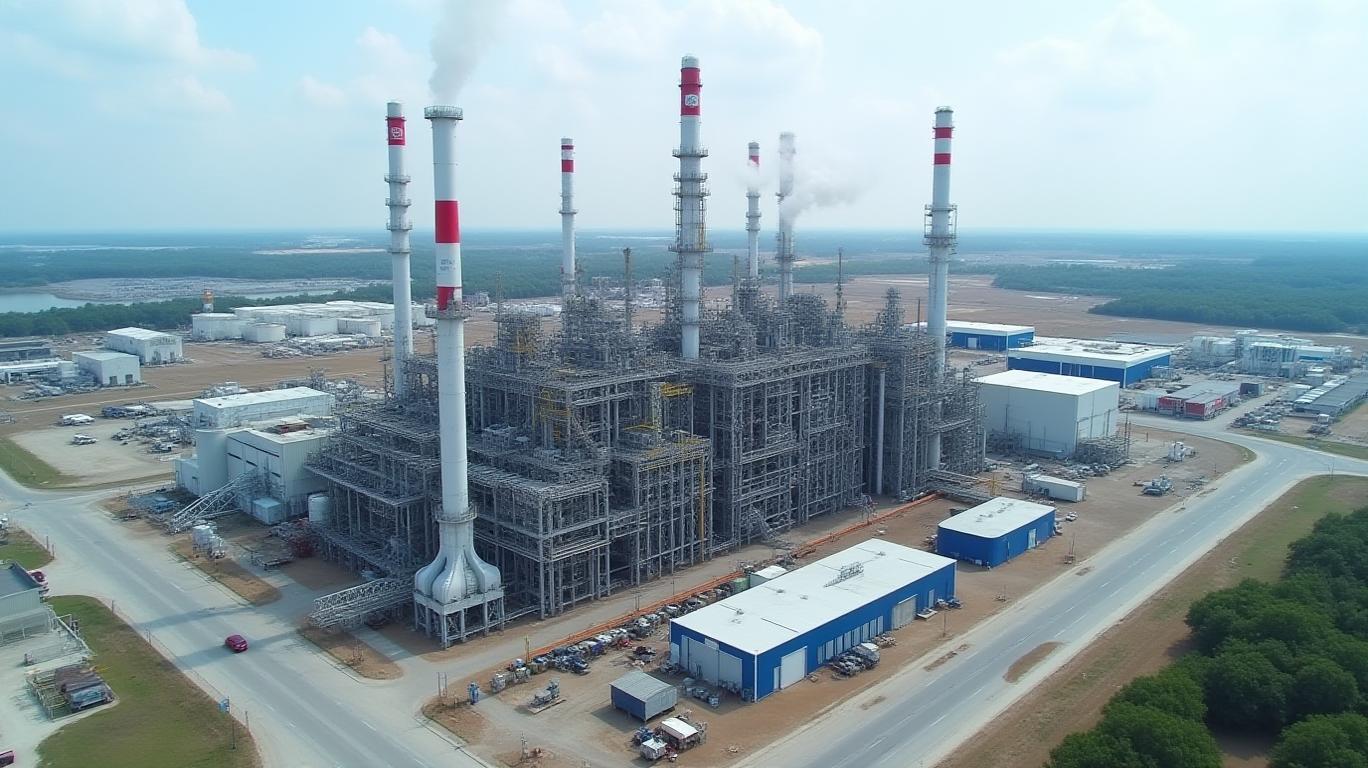Methanex: Navigating Near-Term Storms to Seize the Methanol Renaissance
The global energy transition is reshaping demand for industrial commodities, and few sectors are poised to benefit as profoundly as methanol—a versatile hydrocarbon that fuels everything from shipping to plastics production.
(MEOH), the world's largest methanol producer, sits at the epicenter of this shift. Yet its shares trade near $56.52, a price that reflects skepticism about near-term operational hurdles. This skepticism, however, risks overlooking the company's strategic advantages and the structural tailwinds of a methanol renaissance. For patient investors, the current valuation offers a compelling entry point.Q3 Results: Resilience Amid Operational Headwinds
Methanex's Q3 2024 results underscored its ability to navigate turbulence. While net income dipped to $31 million due to non-cash asset impairments in New Zealand, Adjusted EBITDA soared to $216 million, driven by robust methanol pricing ($356/tonne) and one-time gains from gas sales and insurance recoveries. Production challenges—including calibration shutdowns at the Geismar 3 (G3) plant in the U.S. and gas-supply constraints in Chile—limited output, but sales volumes still hit 1.38 million tonnes, exceeding estimates.

The G3 plant, idled earlier this year, restarted in July 2024 and achieved full rates by October, producing 154,000 tonnes in its first month. This milestone is critical: G3's 1.8 million-tonne annual capacity adds 10% to Methanex's global output. Meanwhile, Chile's gas contracts were extended through 2030, ensuring stable production for years. Even New Zealand's idling of one plant—costing a $90 million impairment—will yield long-term benefits by reducing overcapacity in an energy-constrained region.
Analyst Contradictions: Buy Ratings vs. Price Target Cuts
Tudor, Pickering, Holt (TPH) reaffirmed its Buy rating on Methanex, citing Q3's “surprise upside” and the G3 restart's “de-risking” potential. Analyst Matthew Blair highlighted the $45 million gain from New Zealand gas sales and $30 million in Egyptian insurance recoveries as catalysts for outperformance. TPH's $47 price target reflects optimism about long-term demand, even as it acknowledges near-term headwinds.
In contrast, CIBC cut its price target to $44 from $47, citing softening methanol prices and concerns over global economic growth. The firm's cautious stance, however, overlooks Methanex's strategic moves. The $2.05 billion acquisition of OCI's methanol business—set to close by mid-2025—will add two Texas facilities, boosting scale and refining Methanex's cost position. The deal also aligns with the company's focus on deleveraging post-transaction, leveraging its $511 million cash pile and $600 million credit facility.
Structural Demand: Methanol's Role in the Energy Transition
The real case for Methanex lies in long-term demand tailwinds. Methanol's dual role as a clean marine fuel (replacing bunker oil) and a feedstock for methanol-to-olefins (MTO) production—critical for plastics—positions it as a linchpin of the energy transition.
Global MTO capacity is expected to grow by 50% by 2030, driven by China's shift to “light olefins” and Middle Eastern petrochemical expansions. Meanwhile, the International Maritime Organization's 2023 carbon rules have accelerated demand for methanol as a bunker fuel.
Catalysts for a Turnaround
- G3 plant full capacity: With G3 now running smoothly, Methanex's Q4 production is projected to hit 1.9 million tonnes, erasing prior underperformance.
- OCI acquisition closure: By mid-2025, the deal will add 2.2 million tonnes of capacity, reducing reliance on volatile gas markets (e.g., Chile's Argentine supply risks).
- Global supply-demand balance: Post-pandemic overcapacity is fading, with new projects delayed. Methanex's disciplined capital allocation ensures it will dominate a tighter market.
Valuation: Is $56.52 Too Cheap?
Methanex trades at 14x 2025E earnings, a discount to its five-year average of 16x. This compression reflects near-term risks—gas supply volatility, G3's prior outages—but ignores the OCI deal's accretive potential and methanol's structural demand.
Analysts' average price target of $47.88 is conservative. A bull case of $70–$80 is plausible if methanol prices stabilize near $400/tonne (as seen in 2022) and the OCI deal unlocks synergies.
Conclusion: A Buy for the Patient
Methanex's shares are caught in a tug-of-war between short-term operational noise and long-term megatrends. The current $56.52 price likely underestimates the company's ability to capitalize on its strategic moves and the methanol boom. For investors with a 3–5 year horizon, this is a rare opportunity: a high-quality asset at a discount, primed to benefit from a cleaner, more demanding world.
Action: Buy MEOH on dips below $55, with a $70 price target by 2026. Historically, buying on earnings announcement dates and holding for 30 days since 2020 delivered an average return of 111.56%, though with a maximum drawdown of -49.75%. This underscores the strategy's potential rewards and the importance of a long-term perspective to navigate volatility. The storm clouds are lifting—patient investors will reap the sunshine.

Comments
No comments yet